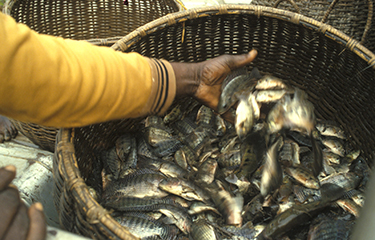Report finds perceived health benefits driving higher tilapia consumption

An increasing global demand for alternative sources of animal protein and a growing appreciation of the nutritional value of seafood are the two key factors likely to drive higher tilapia consumption globally, according to a report by market analyst Fact.MR.
The report “Tilapia Market, Forecast, Trend, Analysis and Competition Tracking – Global Market Insights 2021 to 2031,” claims there is a global shift toward fish an optimal protein option due to its benefits for human health, which include “strengthening heart and bone health, improving brain functions, and keeping weight in check."
The report’s findings are supported by previous data that point to an overall global rise in seafood intake. The World Bank has predicted production will increase by an estimated 23.6 percent between 2010 and 2030, and higher consumption predicted amongst a growing world population.
Moreover, in its 2018 State of World Fisheries and Aquaculture report, the Food Agriculture Organization (FAO) said fish production in Asia and Africa – two hotbeds of tilapia production – has almost doubled during the last 20 years according to FAO.
The benefits of increased fish consumption are numerous, serving as an important part of the diets of millions of people living in Africa and Asia. Tilapia is low in saturated fats, carbohydrates, and cholesterol, but is still considered a high-value protein, and it contains a wide range of essential micronutrients, including various vitamins, minerals, and polyunsaturated omega-3 fatty acids, according to the FAO.
The COVID-19 pandemic has accelerated a trend toward the global populaion eating more tailpia, with more people “become inclined to include tilapia in their diets for immunity boosting," according to the Fact.MR report.
“As this trend is likely to persist over the coming years, the demand-supply curve of tilapia is set to rise as well,” the report says.
The report also cites market potential of tilapia in the U.S. and Europe, citing reported increases in U.S. consumption of seafood, with the latest NOAA report finding that seafood consumption in 2019 rose to its highest level since 2007. Furthermore, Fact.MR cites a 2018 report from the European Market Observatory for Fisheries and Aquaculture Products (EUMOFA) pointing to an increase in European consumption “for nearly all of the main commercial species, reaching a value of 2.433 kilograms per capita, which was 3 percent more than in 2015.”
In the next 10 years, Fact.MR predicted an upward trend in demand for frozen whole tilapia and frozen tilapia fillet due to both seafood variants “having longer shelf-life while keeping nutritional values as such essential fatty omega-3, omega-6, and calcium intact.”
Frozen tilapia is likely to remain the lucrative segment “due to its wide adoption in various healthy and tasty recipes," the report found.
Additionally, the United Nations Conference on Trade and Development (UNCTAD) previous said COVID-19 has currently triggered demand for frozen “preparations and canned and packaged seafood products as households seek to stock up on non-perishable food at the expense of fresh seafood options.”
“Some producers are freezing and processing their catch not only to react to short-term market signals but also create adequate stock in view of future market recovery,” UNCTAD said.
The COVID-19 pandemic has led more consumers to buy seafood online and as a take-out option, spurring “increased interest as home-bound consumers explore retail alternatives,” UNCTAD said.
But the pandemic has also hurt the supply chain for tilapia, especially in Africa, Fact.MR found.
“Our aquaculture sector supply chains have been bitten by the pandemic,” World Aquaculture Society Africa Chapter President Sherif Sadek said. “For instance, in Ghana there are reports of a drop in demand for fresh tilapia and catfish products due to social distancing policies and general lockdowns imposed in major urban market centers, including hotels, restaurants, and tourist centers.”
Sadek also cited problems in Nigeria, where “because of low market activities, fish farm stocking plans and harvesting projections have been badly affected.”
Further complicating matters in Africa is the fact that 80 percent of the continent's 1.2 million tons of tilapia production comes from one country, Egypt, and with trading in perishable products complicated by the pandemic, other African countries have faced difficulties in obtaining adequate supply to meet demand.
Photo courtesy of the Food and Agriculture Organization






Share